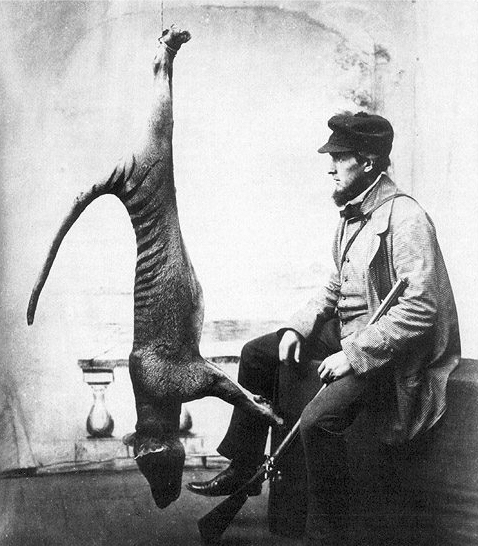
'Enough is enough' - Shocking video of feral cat predation
Adelaide, 5 September 2019
If Australians ever had any doubt about the impact of feral predators on Australia’s native species, a video just released reveals a shocking reality. The video, taken by a remote camera, shows a Short-eared rock wallaby hunted and killed by a feral cat in the Northern Territory.
The Foundation for Australia’s Most Endangered Species Ltd (FAME) has circulated a link to the video seen here: https://www.facebook.com/denrnt/videos/355644782042576/?t=7, initially provided by the Northern Territory Department of Environment and Natural Resources, in order to promote ‘Threatened Species Day’ on September 7.
The Foundation’s CEO, Mrs Tracy McNamara, said the video had shocked members and donors in the lead up to Threatened Species Day.
“We had planned to promote a simple fact to highlight Threatened Species Day – namely that the Australian Nabarlek – a tiny species of rock wallaby found in northern Australia – is more at risk of extinction than China’s Giant Panda. In Australia, it’s listed as critically endangered – officially one step away from extinction. And it is sad that, within this reality, it’s doubtful that many people even know what a Nabarlek looks like.
“But that fact paled when the video emerged. It brought home more than any fact the vulnerability of so many of our native species to the introduced menace of feral cats and foxes.
“There are 1,866 species listed on the Environment Protection and Biodiversity Conservation Act 1999 (EPBC Act) that have a bleak future and unless we deal with the feral predator issue, that future is not long.”
Threatened Species Day marks the anniversary of the death in 1936 of the last Thylacine – or Tasmanian Tiger. “There is no better day on which to draw attention to the fact that Australia has one of the worst rates of extinction in the world. No fewer than 126 species of native flora and fauna have become extinct in the past 231 years,” Mrs McNamara said.
“I am hoping that, distressing as the content of the video is, that it will act as a wake-up call to the urgency of addressing some difficult conservation issues. We are fond of saying that feral cats are to a domestic tabby as a Wolf is to a Chihuahua. Feral cats and foxes are ferocious predators.”
The Foundation is an Adelaide-based, national not-for-profit entity that has worked for the past 25 years to stop the extinction of Australia’s flora and fauna. The Foundation partners with like-minded organisations and wildlife authorities on projects that increase the likelihood of the survival of one or more endangered species. In its lifetime, the Foundation has effectively supported dozens of successful conservation programs and projects.
Mrs McNamara said that many of the projects supported by the Foundation are aimed at species ‘on the brink.’
“The list of projects presented to the Foundation for support is long, growing and likely to be endless. Being a not-for-profit and completely donor-funded forces us to select projects with an excellent chance of success and also to ensure that our donors’ money is spent effectively.
“On Threatened Species Day, the conversation about native species extinction and its causes should be front and centre. We must take action now because the scoreboard for native species is not in their favour,” added Mrs McNamara.
To find out more about the Foundation, its current projects and its commitment to saving Australian endangered species, visit www.fame.org.au.
Further information:
Tracy McNamara
Chief Executive Officer
Foundation for Australia’s Most Endangered Species Ltd (FAME)
Telephone: + 61 411 446 924
Additional information:
FAME is currently partnering on projects that will benefit and protect these species:
Bush Stone-curlew (Mt Rothwell/Orana Park, Victoria)
Pink Underwing Moth & Small-leaved Tamarind (Wilsons Creek, New South Wales)
Southern Cassowary (Daintree Lowland Rainforest, Queensland)
Kangaroo Island Dunnart (Kangaroo Island, South Australia)
Mary River Turtle (Mary River, Queensland)
Southern Bell Frog (Clayton Bay, South Australia)
Western Quoll (Ikara-Flinders Ranges, South Australia)
Tall Astelia (Otway Ranges, Victoria)
Bulburin Nut (Gladstone, Queensland)
Tasmanian Devil (Barrington Tops, New South Wales)
For detailed project information, visit www.fame.org.au/projects.
